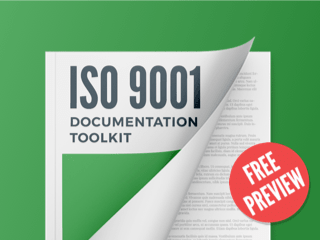How should I implement QMS? Should it be drawn up according to the clauses/principles & mandatory requirements? Should I then link and structure them in the correct manner?
Assign topic to the user
When I started implementing quality systems, I started with the standard and then took pieces of the company and associated them with each clause in the standard. Later, I realized that this approach made it difficult for other people to understand QMS in addition to sounding very artificial. The process approach helped me to overcome this difficulty. Instead of starting with the standard, start with the company: How does the company work? How does the workflow circulate from a customer in need to the customer served?
So, think about your organization as a set of daily activities and at the same time a whole in search of meeting a purpose, a strategic intent.
For the first part, the daily activities, use the process-approach, you can see this free webinar on demand – The Process Approach – What it is, why it is important, and how to do it – https://advisera.com/9001academy/webinar/iso-9001-process-approach-free-webinar-on-demand/ - then you can ask people in your organization to describe how they do their activities, what kind of documents they use as guidance or to record, and who participates. After this, you can use ISO 9001:2015 clauses to check if anything is missing. For example, clause 8.2 can be used to check a commercial process, clause 8.3 can be used to check how to develop a new service and clause 8.4 can be used to check a purchasing process.
Mistakes, nonconformities may happen in each process, you can see this free webinar on demand - How to implement risk management in ISO 9001:2015 - https://advisera.com/9001academy/webinar/how-to-implement-risk-management-in-iso-90012015-free-webinar/ - with the risk-based approach you can determine what needs to be done to improve or control performance in each process.
For the second part, you need to see your organization as an entity immersed in a context, working for and with interested parties following a strategic orientation to meet desired objectives. For this part let us apply ISO 9001:2015 clauses 4.2, 4.1 and 6.1.
4.2 - What is the organization’s purpose? Why does it exist in the first place? Whom does it serve? What are their needs and expectations? An organization, like any other organization has to serve its “customers” (even if they are not the ones who pay). These groups also have need and expectations. And the service may have to be provided under a set of regulations that act as constraints. So, list the more relevant needs and expectations. You see, after all the noise and bells and whittles, the organization exists to provide, to answer, to deliver on those needs and expectations.
From here you can define and characterize the set of services that are provided by the organization, and their outcomes, their service specifications.
4.1 – Is it easy to deliver on those needs and expectations? While answering this question reality sets in. The organization is placed in a certain context with internal and external issues. Perhaps there is not enough money, perhaps there is lack of staff, perhaps “customers” don’t collaborate, perhaps there are voluntaries that can be called to help, …
6.1 – when you confront the relevant needs and expectations of the relevant interested parties with the internal and external issues from the context you can determine risks and opportunities. What can help you or hinder you in meeting the desired outcomes according to specifications? You can use the most relevant risks to develop a Quality Plan – what needs to be controlled, what needs to have work instructions, what needs to be recorded, what kind of training is needed, … this way you are starting to design your quality management system not based on mambo jambo, but in what really matters to the purpose of the organization and its interested parties.
You can find more information below:
- About context and interested parties you can see this free webinar on demand - ISO 9001:2015 clause 4 - Context of the organization, interested parties, and scope - - where I present examples of internal and external issues and how to determine them, and examples of interested parties and their requirements and expectations.
- Checklist of ISO 9001 implementation & certification steps - https://advisera.com/9001academy/knowledgebase/checklist-of-iso-9001-implementation-certification-steps/
- How to budget an ISO 9001 implementation project - https://info.advisera.com/9001academy/free-download/how-to-budget-an-iso-9001-implementation-project?utm_source=script-for-iso-9001-lead-implementer-course&utm_medium=downloaded-content&utm_content=lang-en&utm_campaign=free-downloads-9001
- Free webinar on demand - Overview of ISO 9001 implementation steps - https://advisera.com/9001academy/webinar/overview-of-iso-9001-implementation-steps-free-webinar-on-demand/
- How to determine interested parties and their requirements according to ISO 9001:2015 - https://advisera.com/9001academy/blog/2015/11/10/how-to-determine-interested-parties-and-their-requirements-according-to-iso-90012015/
- How to address risks and opportunities in ISO 9001: https://advisera.com/9001academy/blog/2016/06/21/how-to-address-risks-and-opportunities-in-iso-9001/
- Enroll for free course - ISO 9001:2015 Foundations Course - https://advisera.com/training/iso-9001-foundations-course/
- Book - Discover ISO 9001:2015 Through Practical Examples - https://advisera.com/books/discover-iso-9001-2015-through-practical-examples/
Comment as guest or Sign in
Dec 28, 2020


